As an Amazon Associate I earn from qualifying purchases.
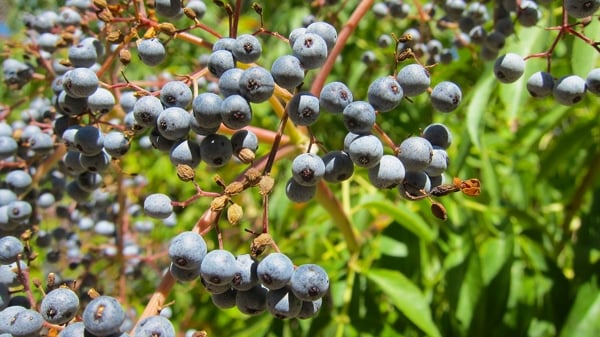
I’ve been on a berry rampage this month. Since August 1, I have foraged for nine — count ’em, nine — different varieties of wild berries within 150 miles of my house. That variety surprised even me; I literally stumbled upon several of the varieties, some of which I’d never even seen before.
Foraging led to cooking, of course, and I’ve posted roughly a dozen new berry-related recipes in the past month, and have done all sorts of bizarre experiments with some of the weirder fruit I’ve found; some of you read about my manzanita cider last week.
When I was done, I realized that to write one post on all I’ve learned would be madness — it’d take something like 5,000 words (yeah, I know, I can be long-winded. Sue me), which few of you have time to read. So I’ve broken my berry extravaganza into three pieces: Berries of the Central Valley, where I live; berries of the High Sierra; and berries of the Coastal Range.
Don’t live in California? Rest assured you can still read on — almost all of these berries also live in other Western states, and most have variants in the East, like the blackberries and elderberries I’m writing about today.
Are there other wild berries in the Central Valley? You bet. But with one exception, elderberries and blackberries are the most common, the tastiest and the easiest to find in quantity; the exception is the wild grape, and I’ll get to that one in September.
BLACKBERRIES
Might as well start with the one fruit pretty much every American can spot from a distance, the humble blackberry.
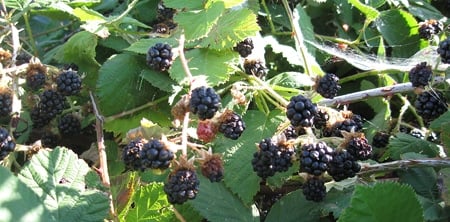
Blackberries grow everywhere here. They are invasive, full of thorns, and are oh-so tasty if you can beat the birds to them. So far as I know, blackberries can be found in every state, and they all come ripe between June and September, depending on where you are. The various species are all interchangeable in recipes.
The plants are easy to recognize: Blackberries grow as brier patches made up of thorny canes. They have white flowers in spring and the berries ripen from green to red to black. And, um, ahem, know that the blackberry is NOT a raspberry, which has red fruit. I have a vivid memory of my sister telling me to try that “red blackberry” once when I was a kid. It was so sour I almost cried. I am still plotting revenge on her for that one, all these years later…
A ripe blackberry pulls off the bush easily. They are very soft, however, so collect them in shallow, broad baskets so you don’t pile them too high. Doing so will smush the berries. You will undoubtedly pick lots of slightly less ripe berries, and this is a good thing — it balances the acid and sugar when you are making things with them.
Blackberries have excellent amounts of sugar and acid, but low tannins, which matters much only if you are making wine. Most people store whole berries by freezing them on sheet pans in one layer to prevent sticking, then putting the frozen berries in a sealable bag. I cook them down and make a blackberry syrup instead.
What do you do with blackberry syrup? Well, it’s pretty awesome on pancakes or vanilla ice cream; I served some over an ice cream flavored with yerba buena the other day. (Yerba buena is a kind of mint that grows all over Southern California.)
Another obvious one is blackberry liqueur. How easy is this? Wash dust off blackberries, fill a quart Mason jar two-thirds full and fill to the rim with 100-proof vodka. Let this steep in the pantry for anywhere from a month to a year, strain and sweeten to taste. Easy-peasy.
Getting a little sportier, I decided to make a blackberry panna cotta. Most blackberry panna cotta recipes are really vanilla panna cotta with a blackberry compote; I did something like this earlier this year with a lemon verbena panna cotta and a mulberry compote. This time I wanted the blackberries in the cream.
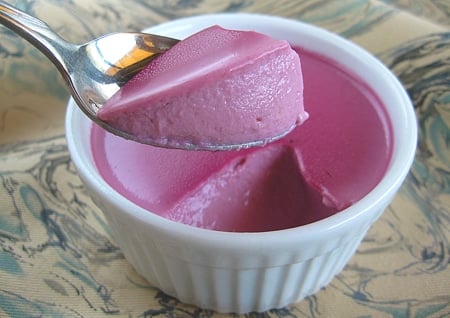
Ooh yeah, baby! I’ve been tinkering with the amount of gelatin in my panna cotta experiments (What? You don’t do panna cotta experiments, too?) and I finally nailed it with this one. A good panna cotta should just barely hold itself together, and be so rich and creamy you can’t eat more than a little ramekin full. Score that on this one.
Other things to do with blackberries? There are scores of recipes beyond the panna cotta, liqueur and syrup, but I like these best:
- My friend Elise’s blackberry pie
- Heidi Swanson’s blackberry limeade
- And my other friend Jaden Hair’s Salmon with Blackberry Brandy Sauce. I know, it sounds nasty and weird. It isn’t. It really works, and the sauce is actually better with venison.
ELDERBERRIES
The other main summertime fruit around these parts is the elderberry, sambucus cerulea. I’ve written about elderberries before, but there is always more to tell.
First off, let me say that while I can eat lots of ripe elderberries right off the bush, not everyone can. Some people get nauseous if they eat too many raw ones. Cooked, however, anyone can enjoy them, and elderberry syrup is considered a medicinal tonic in many countries; you can buy it at health food stores all over America.
Elderberries grow on large bushes that can occasionally become small trees. The buttercream-colored flowers are on clusters, and the berries ripen from green to almost black. In full sun, the Western elderberry will often develop a frosty bloom like a winegrape. Eastern elderberries rarely get this bloom.
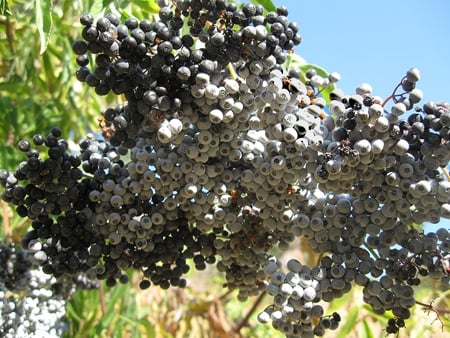
Collect the berries by cutting whole clusters, which can weigh more than a pound each. You know you want to pick them when they are a) all black or frosty, and b) the stem is reddish. You can pick ripe clusters when the stem is green, but the berries won’t come off the stems as easily.
And you must get the elderberries off the stems: Every other part of the plant is toxic. Can you have a couple stems that slip by? Sure, no biggie. But do your best to get them all.
Elderberries have plenty of acid, good tannins, but not a ton of sugar. They are a deep purple when juiced and have an aroma almost exactly like red winegrapes — think of the bouquet on the fruitiest Zinfandel you’ve ever smelled and that’s close. I am sad to say that the Eastern elderberry lacks this wonderful aroma; it’s why Westerners don’t really understand that Monty Python joke about your father “smelling of elderberries.”
The berries are seedy, too, so elderberry jam is not ideal, although it will most definitely keep you regular. So what do you do with elderberries?
- Make elderberry liqueur
- Make the mysterious pontack, a British vinegary elderberry sauce said to be best after it’s aged more than seven years
- Elise at Simply Recipes makes elderberry jelly
- Use the jelly for a classic Cumberland Sauce with wild game
- Another friend, David Lebovitz, has a good recipe for elderberry syrup
- Make the syrup and use it for an elderberry ice cream
- Or, if you are really adventurous, make your own elderberry wine
Now I am not putting down the recipe for my elderberry wine because it is complicated and you need to have some idea about making wine to start with. Oh, and there is another reason: I include step-by-step instructions on how to do it in my upcoming book, which should be out in spring 2011. I know, I know, teasing is mean…
Tide yourself over with this elderberry ice cream, which has some creme fraiche and elderberry liqueur tossed in to make it just that much better. It’s damn good: Tangy and rich, smooth and fruity.
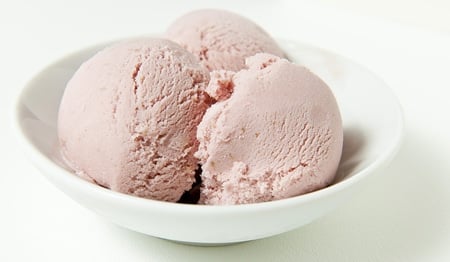
Incidentally, elderberry season is pretty much over here in the Valley, but it is just starting in the Sierra, and in the rest of the country.
UP NEXT: Berries in the High Sierra — duds, diamonds and deliciousness
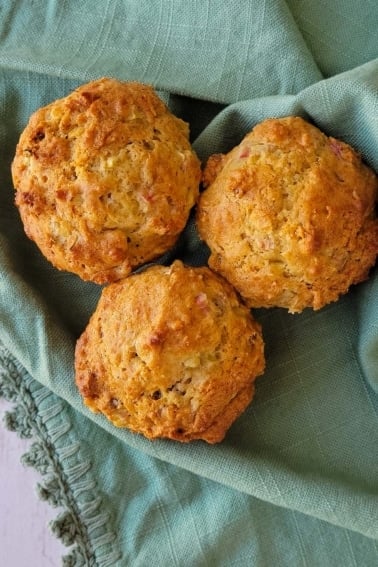

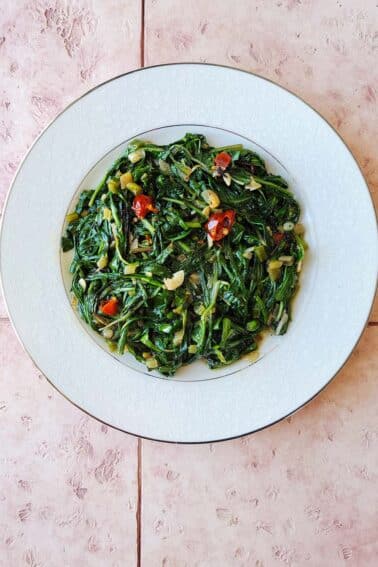
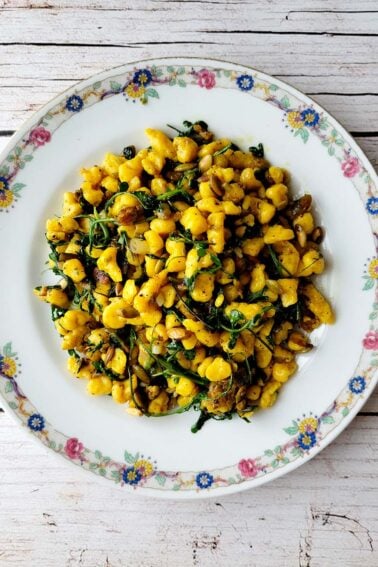
Signor, Have you headed Stockton Way? If there are enough berries, I think an eau de vie might be really interesting, if your willing to join me. Or am I dreaming about such volumes? The blackberries that used to line the levee are all gone alas. And I have no idea where to find them now. Grapes though, around Cosumnes can be quite lush. There’s an idea.
Hank, thanks for the tip, and thank goodness I didn’t do that trick with the whole batch – I did half and half, to compare.
…and there I was thinking 2 lbs of blackberries collected along with a day’s limit of rainbow trout would suffice…I’ll have to start collecting much earlier in the season, Hank.
Great recipes I’m looking forward trying out this fall!
question. I live off of t st and I would like to go foraging for the first time. are there any areas where elderberries or any plants I can forage for are located near me?
Kira: I am not sure, but maybe the American River Parkway?
The grapes are in there for two reasons–neither particularly exciting:
1. I didn’t have enough elderberries for a larger batch of jelly, as I got overly ambitious with the pontack and the different liquors, so I figured I might get more bang for the buck if I combined them with the grapes.
2. I have a heckuva lot of grapes, and I’m trying to find something to do with them. Their flavor isn’t very “grapey,” but they were planted when I moved into the new house this year and I’m not about to look a gift grape in the mouth. Might do a grape chutney or use them as a base for another preserve with another fruit.
I was just up on the upper sac around castle craggs fishing. I probably past many plants not realizing what they were or paid attention. damn. lol thanks for the info hank.
Josh: That freezing trick only works if you take the umbels out a few at a time — God help you if you let the frozen cluster thaw. You will NEVER get the now-mushy berries off…
Adele: When the cat’s away…
Andy: If the green grapes don’t bring that much flavor, are they there solely for filler/sugar?
Mari: It’s one of the Sacred Mysteries… 😉
Rebecca: They’re not all done in the Valley, but they’re on their way out.
Victor: Look around the river and at the edge of the marshes. Elderberries like to be near wet ground, although not actually in it.
Another great post. I can’t wait to see what other berries you picked and what you have done with them. I have never tried elderberries, but would like to after this post. What kind of an area do they grow in? I live in Napa and would like to search locally. Where should I start looking?
What’s that old saying Hank? “The blacker the berry, the sweeter the post?” Great stuff!
I can’t believe they’re done in the CV– here in SoCal there are still tons of green ones. Usually in the spots where I go to gather them, no less :). This state never fails to amaze me with its diversity.
And thank you for all the elderberry recipes– I’m so used to using things medicinally that I’m only just getting into the idea of using them as food too!
I did the freezing thing, made removing the berries much easier. Ended up destemming as much as I could then smashing the berries up with sugar and straining out all the solids (best way I could figure out to remove all the stems for safety). Used the juice to make 2 jars of elderberry liquor.
Can you talk about why water mixed with just a tiny bit of purple elderberry juice turns bright blue? I didn’t expect it and it was pretty incredible.
Excellent post, Hank. Long time reader, only one previous comment. I live in West Sac, and there were tons of elderberries along the levees this year (and presumably every year). Already made your pontack, have a liquor in the works–actually two, one batch is infusing in brandy and I’m not sure whether it will be an infused brandy or an elderberry infused brandy liquor. Today I tried my hand at a green grape and elderberry jelly recipe from the internets that looked pretty good, and it gave me an excuse to use up some of the glut of grapes growing at la casa. Used pectin, so it seems to have set up already. One trick that saved a decent amount of time was using the power of Jack Lalanne to extract the elderberry juice, though you still have to pick them off of the stems.
Elderberry/Green Grape recipe
2.5 cups of both grape juice and elderberry juice (this is from about 3 pounds of each)
1/4 cup lemon juice
7 cups sugar
1 box pectin
bring everything but the sugar to a hard boil, add sugar, boil 2 minutes, then seal. Green grapes don’t bring much flavor to the party, so the elderberries are the star. Made 8 half pints, with the skimmings for tomorrow’s toast.
Ooh. That panna cotta looks lovely.
I only know of one blackberry bush in my neighborhood: it grows in the front yard of a house that I pass on my morning run. Fortunately, the house is up for sale and looks to be unoccupied, so I don’t feel bad about stopping to pick any ripe berries on my way back!
Cool post! I’ll add a tip that I just learned: When you get home, throw the elderberry umbels in the freezer, then the next day pull them out, & they come off much easier!
Also, I’m personally offended that you didn’t include my blackberry recipe for robitussin.